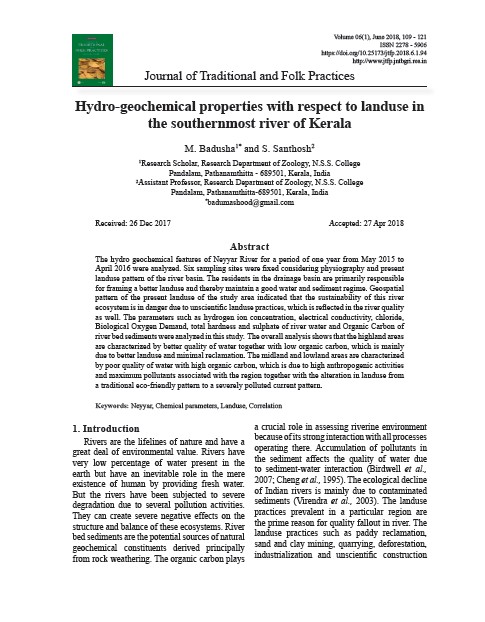Hydro-geochemical properties with respect to landuse in the southernmost river of Kerala
Keywords:
Neyyar, Chemical parameters, Landuse,, CorrelationAbstract
The hydro geochemical features of Neyyar River for a period of one year from May 2015 to April 2016 were analyzed. Six sampling sites were fixed considering physiography and present landuse pattern of the river basin. The residents in the drainage basin are primarily responsible for framing a better landuse and thereby maintain a good water and sediment regime. Geospatial pattern of the present landuse of the study area indicated that the sustainability of this river ecosystem is in danger due to unscientific landuse practices, which is reflected in the river quality as well. The parameters such as hydrogen ion concentration, electrical conductivity, chloride, Biological Oxygen Demand, total hardness and sulphate of river water and Organic Carbon of river bed sediments were analyzed in this study. The overall analysis shows that the highland areas are characterized by better quality of water together with low organic carbon, which is mainly due to better landuse and minimal reclamation. The midland and lowland areas are characterized by poor quality of water with high organic carbon, which is due to high anthropogenic activities and maximum pollutants associated with the region together with the alteration in landuse from a traditional eco-friendly pattern to a severely polluted current pattern.


